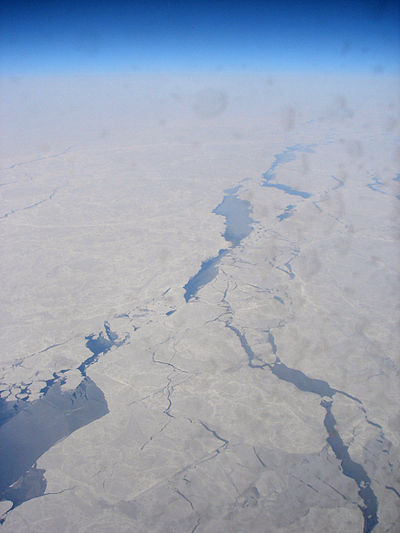

A lead (/ˈliːd/, rhymes with "reed") is a large fracture within an expanse of sea ice, defining a linear area of open water that can be used for navigation purposes.[1][2][3] Leads vary in width from meters to hundreds of meters.[4] As is the case for polynyas (another sea ice feature involving open water), leads allow the direct interaction between the atmosphere and the ocean, and are important for Arctic sea ice ecology. Additionally it has been lately found that ice leads contribute significantly to the amount of mercury deposited onto surface and leaked into the ocean.[5] If the air is cold enough (typically in the winter), the water within a lead quickly refreezes, such that in many cases, leads are partly or entirely covered by a thin layer of new ice.[6]
- ^ "WMO SEA-ICE NOMENCLATURE • TERMINOLOGY". www.aari.nw.ru. Archived from the original on 2013-12-03.
- ^ Environment Canada – Weather and Meteorology – Ice Glossary
- ^ All About Sea Ice, Introduction :: National Snow and Ice Data Center
- ^ sea ice (ice formation) : Sea ice formation and features - Britannica Online Encyclopedia
- ^ Weiss J. and Marcq S. (2012). Influence of sea ice lead-width distribution on turbulent heat transfer between the ocean and the atmosphere. The Cryosphere, 6, 143–156
- ^ Weeks, W. F. (2010) On sea ice (Chap. 11). University of Alaska Press, Fairbanks, 664 p.